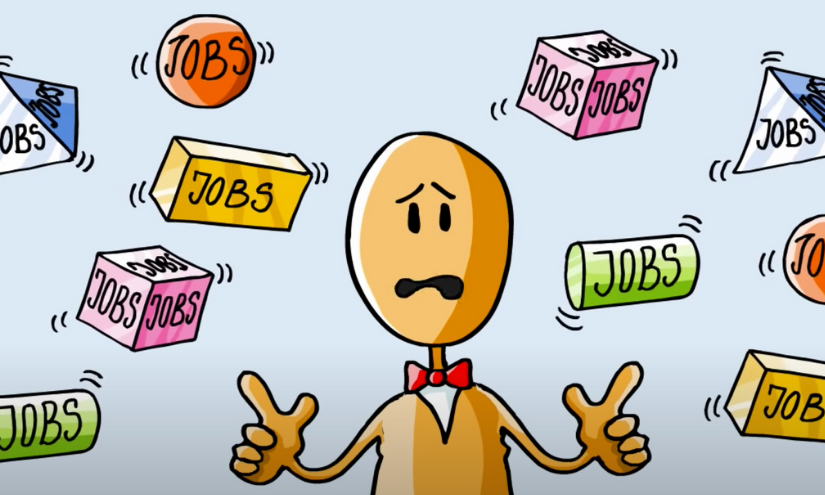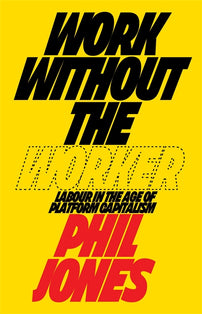The Mechanical Turk
The brutal truth behind our automated futures and the new world of work.

We live in an age of technological wonder. Today, machines beat humans at chess, write pop songs and drive cars of their own volition. Automated stores allow customers to choose their shopping and walk out without using a checkout. Through tiny chips planted in the brain, machines are apparently learning to read our minds. This silicon arcadia promises to cure our poisoned planet and take us to Mars, to realise eternal life and raise humans out of dull toil to the state of the divine. It is a world of abundance and smart solutions, where convenience is only matched by luxury.
It is also a world of dubious basis, where the apparently inexorable thrust of scientific progress is merely the dream of a few tech tycoons. Dystopia, ever the bad conscience of utopia, troubles this fantasy of cybernetic harmony, which beneath its glittering surface relies on increased oppression, surveillance and atomization. Each world-historical event, whether it be financial crash or pandemic, only seems to accelerate our drift toward its centre – a ‘no-touch future’ – where, encouraged to avoid others, we stay in our homes, which are no longer just personal spaces but our offices, shopping centres, gyms, doctors and entertainment venues. An internet of things winds its way through our sleep, meetings and heart rates, and reports each phenomenon as data, later fed back into our lives as optimised services, all provided by one platform or another. Outside of the home, the ‘smart city’ offers only greater surveillance, where the dispossessed live out their days as risk profiles to be policed by biometric and facial recognition technologies. A weave of algorithms wraps all bodies, spaces and institutions in a web of machinic perception, so tightly that forms of computational intelligence become quotidian to the point of invisibility. Through this imperceptible matrix of sensors, trackers and cameras, capital gains access to new materialities of code and cognition. From meteorology to biometrics, the microscopic to the cosmic, ever more life falls under the thrall of exchange. Data is transfigured into all manner of alien machines: autonomous vehicles replace taxi and truck drivers, algorithms supplant the authority of managers and diagnose cancer with accuracy greater than any doctor.
Yet, this automated dreamworld is more fantasy than reality. Behind the search engines, apps and smart devices stand workers, often those banished to the margins of our global system, who for lack of other options are forced to clean data and oversee algorithms for little more than a few cents. The feeds of Facebook and Twitter may seem to wipe away violent content with automated precision, but decisions about what constitutes pornography or hate speech are not made by algorithms. A facial recognition camera seems, of its own volition, to spot a face in a crowd, an autonomous truck to drive without human involvement. But in reality, the magic of machine learning is the grind of data labelling. Behind the cargo cult rituals of Silicon Valley is the gruelling labour of sifting hate speech, annotating images and showing algorithms how to spot a cat.
These badly paid, psychically damaging tasks – not algorithms – are primarily what make our digital lives legible. ‘Think of it as microwork, so for a penny you might pay for someone to tell you if there is a human in a photo’, Jeff Bezos informed the world at the public opening of Amazon Mechanical Turk, the first and still most famous of these sites. On such sites, tasks like tagging a human in an image to train artificial intelligence last for all of a minute. Even longer jobs tend to last no more than an hour. Microwork sites allow contractors to decompose larger projects into radically short pieces of work. Contractors post these ‘human intelligence tasks’ (HITs) to the site, which appear on the screens of thousands of workers – or ‘Turkers’, as they are known – who jostle to complete the tasks on a piece by piece basis. From each transaction the platform takes a 20 per cent cut. The work is carried out remotely and workers never encounter each other except as digital avatars on online forums.
A prototype for twenty-first- century work that is as empowering for capital as it is paralysing for workers, Mechanical Turk has now been emulated by competitors such as Appen, Scale and Clickworker, offering the same heady mix of clean data and cheap labour to contractors ranging from academics to capital’s great modern agents – Facebook and Google. As brokers of labour arbitrage, these sites locate what Mike Davis describes as ‘surplus humanity’ – sections of the global populace rendered outside of the economy proper – to sporadically fulfil the needs of big tech.3 Contracted only for the length of a given task, workers vacillate between states of employment and unemployment, and may end up working for myriad companies over the course of a day. Volatility spun as flexibility allows these sites to present themselves as the benevolent, forward-thinking guardians of a new labour compact, designed for a generation of workers who allegedly desire greater ‘independence’ over security and decent pay. The sole beneficiaries of this arrangement, though, are contractors – often large tech firms such as Twitter, Facebook and Google – who get to shirk the responsibilities of more standard employment. No longer classed as ‘workers’ but as ‘freelancers’, ‘independent contractors’ and – perhaps most egregiously – ‘players’, those who work on these sites forgo rights, regulations and any last vestige of bargaining power.
The brutal tectonics of platform capital are reshaping the already desolate global landscape of labour into a grey hinterland of casual and petty employment. But to read much of the literature on microwork, one would think such data work is an entirely novel phenomenon. Confident assertions of ‘the human cloud’, ‘humans-as- a- service’ and ‘just-in- time- labour’, suggest a tiger’s leap from the workaday world of yesteryear into a brave new future of ‘machine-human hybridity’. ‘Artificial artificial intelligence’ – to use the term of Jeff Bezos – suggests a high-tech pact between worker and algorithm, in a ‘new economy’ set for explosive growth. For this reason, institutions like the World Bank have cast microwork as the latest saviour in a long line of measures promising to rescue economies of the Global South from the slow apocalypse of informal work, debtfare and rising slums. Microwork truly represents not the phoenix of the South but a further twist in our planetary crisis of work. Microwork is the sum of the same processes of sluggish growth, proletarianization and declining labour demand that have ballooned the informal sectors of countries such as India, Venezuela and Kenya. The rising numbers on these sites are not a story of capitalist success, but a tragic chronicle of the rising numbers unable to find work in formal labour markets. They are often those housed in prisons, camps and slums, the totally jobless or underemployed – a sorry reminder of surplus humanity.
It is perhaps not surprising, then, that the number of people on these sites has boomed in the long interregnum between the crash of 2008 and the present. Though no precise figures exist for how many workers undertake microwork globally, estimates now place the number at around 20 million, a large proportion of which reside in the Global South, in South America, East Asia and the Indian subcontinent. Many of these workers are educated but have been cut adrift from the formal labour market. Among the overeducated but underemployed workers of the Global North, numbers are rising too. In the UK, surveys suggest that as much as 5 per cent of the UK working age population use these sites at least once a week. For these workers, microwork is mostly a part-time pursuit to boost hours and stagnant wages. For many across the globe, however, microwork is a full-time job. A survey by the International Labour Organization (ILO) found that 36 per cent of workers regularly worked seven days per week.
Judging by the numbers individual platforms claim to host, the numbers working on these sites may well be much higher than current estimations suggest. In the last decade, Clickworker alone has grown to over 2 million users, while even smaller sites like Appen now host over a million. If the workers using these platforms were classed as employees, the contracting firms would rank among the largest employers in the world today, behind only a few governments and Walmart. Somewhat staggeringly, the Chinese crowdwork platform Zhubajie boasts over 12 million users, which would make it the largest contractor of labour the world over.
The growing numbers surviving on petty data work represent, for the advocates of the Washington Consensus, some of AI’s unambiguous beneficiaries, a convenient counternarrative to the steady stream of media coverage predicting automation’s casualties. But it turns out the lines between casualty and beneficiary are here not so clear. The call centre workers threatened by chatbots and the checkout staff by automated stores are those most likely to find themselves adrift on the storm of twenty-first- century capital, and thus forced into the grim sanctuary of online tasks. There are still jobs, microwork’s advocates will insist. But as the average wage of a ‘Turker’ – at less than $2/hour – shows, even if automation has not erased workers entirely, it has now pushed them to the edge of survival.
The above is an excerpt taken from Work Without the Worker: Labour in the Age of Platform Capitalism by Phil Jones, which exposes the brutal truth behind our automated futures and the new world of work.
[book-strip index="1" style="buy"]We are told that the future of work will be increasingly automated. Algorithms, processing massive amounts of information at startling speed, will lead us to a new world of effortless labour and a post-work utopia of ever expanding leisure. But behind the gleaming surface stands millions of workers, often in the Global South, manually processing data for a pittance.
Recent years have seen a boom in online crowdworking platforms like Amazon’s Mechanical Turk and Clickworker, and these have become an increasingly important source of work for millions of people. And it is these badly paid tasks, not algorithms, that make our digital lives possible. Used to process data for everything from the mechanics of self-driving cars to Google image search, this is an increasingly powerful part of the new digital economy, although one hidden and rarely spoken of. But what happens to work when it makes itself obsolete. In this stimulating work that blends political economy, studies of contemporary work, and speculations on the future of capitalism, Phil Jones looks at what this often murky and hidden form of labour looks like, and what it says about the state of global capitalism.

